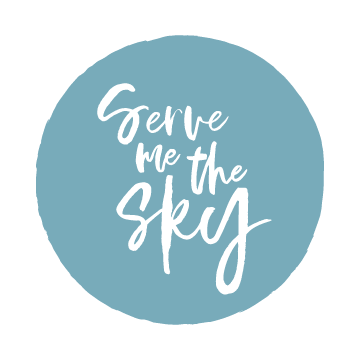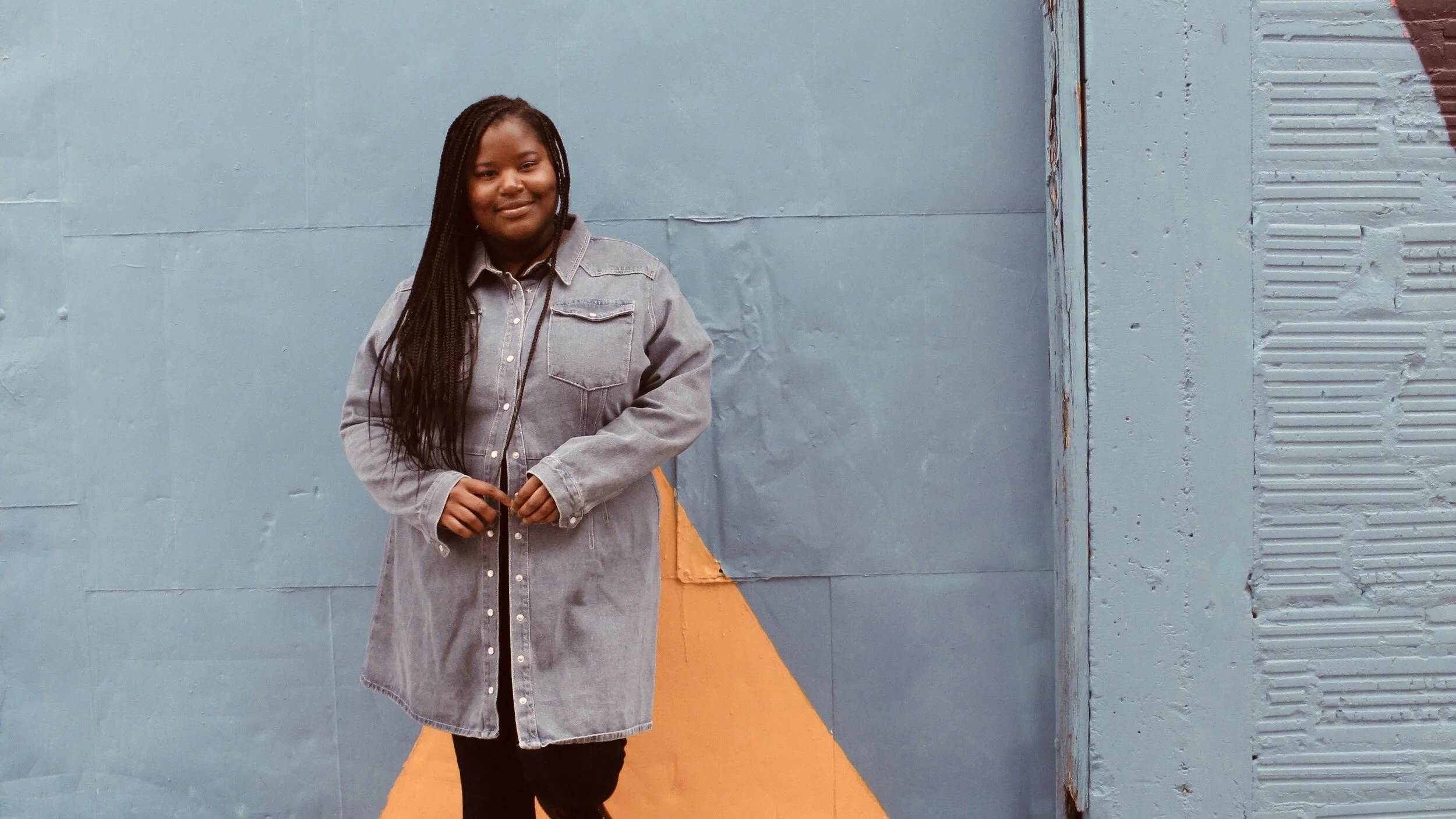A Conversation with Jayde Powell: Tips for Building Human Connections Online
/Meet social media professional Jayde Powell
This is the eighth post in the “A Conversation With” series, where I interview talented folks about their areas of expertise, whether that’s social media, communications, or PR. You can read past entries in the series here.
This month, I interviewed Jayde Powell, social media professional and Twitter networking queen, based in Atlanta, Georgia. We discussed what good community management looks like, how to network on Twitter, and making human connections online. I hope you enjoy her insights!
Tell me about your work as a community manager and how you got into social media as a profession.
I started in social when I was in college at Georgia State University. I was involved at a student organization called the Collegiate Entrepreneurs Organization. When I was running for the VP of Marketing position, one guy offered me an internship at his social media agency. I was really gung ho on Facebook at the time, other platforms weren’t as big yet. The agency’s team was all about Twitter! They trained me and threw me on brand accounts and I learned about how social media can really drive sales for businesses. I went from intern to community manager to senior manager to social media director!
I also have worked at a multicultural agency in account services and at a cannabis company. Currently, I work in the airline industry as a social community manager. My role is all about talking to people who are engaging with us and helping generate brand love.
How do you define community management? What misconceptions do people have about it?
It all comes down to community and building connections with people. It’s tuning in and listening to them. The members of your social community can inform the type of content you create, if you’re paying attention. They’re the voice we’re trying to tap into.
The biggest misconception is that community management is more customer service-focused. It’s not just that, though it looks different for different organizations. Customer service is incredibly important, but once we get past that point, it’s about what we’re doing to foster relationships with our customers online. We don’t want to miss out on opportunities to really engage.
How does community management differ from platform to platform?
It comes down to the capabilities of each platform and the tone you use with each. I love Twitter because you can be a bit more casual. You can also use the keyword search functionality to search for campaigns or specific types of content. With Instagram, it’s similar, it’s easy to tap into more relaxed conversations and be a little more human.
On Facebook, the first couple comments set the tone for the whole comments section. It’s like there’s no in between- it can be great and all heart emojis, or it can be very sour. Facebook is the best platform for moderation because they give you more options. It’s far more noticeable to hide a reply on Twitter or Instagram than on Facebook.
How do you decide when to hide or delete comments?
You never want to be in a position where you’re trying to censor your community. You want them to talk freely and have truthful conversations. There also needs to be a level of respect. Facebook hasn’t taken a strong stance about hate speech on the platform, even in their advertising. It’s important to have guidelines for your communities. Make sure community threads are a place where people feel comfortable to speak their minds freely. My rule of thumb is: if it’s hate speech, people are being threatened, or someone is trying to take down the thread with negativity, then hide or block. It’s all about doing what’s in line with your brand’s values.
What are some common mistakes when it comes to community management?
As marketers, we tend to get in our heads a lot and sometimes that’s not really necessary. We’re worrying about “What is the voice of the brand?” when we should just be thinking about how we talk to people in real life. Be human! If it sounds weird when I say it out loud, I won’t write it out on social. We get caught up in corporate communications language. But people don’t care about that, they want an honest answer. Even when they’re talking to a logo, they recognize it’s a person behind that. The job of the social media manager should be to take what brand managers say and translate it into a social voice.
Another mistake is not leveraging user-generated content enough. There are great tweets I see and we should amplify them! We can use it for our research, use it in our own content, or make it a quote retweet. It’s easy to get caught up in “Oh, we’re responding and that’s good enough,” but how do we take it one step further? At the end of the day, the moments that go viral and the things in the media are human stories, so we need to translate the brand in a human way.
For organizations with limited bandwidth, what are some community management tactics that go a long way?
It’s easy to get caught up in the comments. Don’t feel like you have to respond to everything--it’s not sustainable and it doesn’t add value. Respond to things that feel right.
There’s a level of investment you have to put into your community as well--what are you doing to reward them? For small businesses, that’s an easy way to introduce existing members of your community to new products and bring them into the fold. You can include them in a small research group and get genuine feedback!
How do you measure success for community management?
It comes down to strategy and the goals you’re trying to accomplish. I try to focus on brand love and brand equity. If I feel like we’re able to build the connection from social to our brand, I see that as a win.
I want the customers I engage with to feel loved, seen, heard, and valued. At the end of the day, that’s what we all want, and if a customer feels that, they’ll tell you. To me, that is a sign of successful community management.
You have a real knack for networking on Twitter! What are your best tips for Twitter networking?
Be yourself! It’s cheesy but I believe it. As marketers, we feel like we have to create an online persona, but the way I tweet is the way I am in real life. I had two separate accounts on Twitter when I started, but began wondering, “Why do they have to be separate?” It comes back to that humanness. Social media should be a reflection of who you are in real life.
Find your community. There are so many communities--marketing Twitter, Black Twitter--and you can engage with so many people. For me, it’s important to build those connections offline as well. I set up Zoom chats with people or DM them to get to know them more. I’ve had conversations about therapy, work, everything. I’m all about building human connections.
Twitter is a very different platform from Facebook and Instagram. What does it take to be successful on Twitter?
The thing about Twitter is you really have to tap into it, it’s so real time. It has a culture of its own and you have to experience it for yourself. Really talking to people is important. No one wants to talk to a ghost! If you’re just there to retweet things, you’re missing out.
For brands, people feel like everything has to follow “best practices for marketing,” but that’s not always the case. The simplest tweets sometimes perform the best. I’ve seen tweets with no hashtags, emojis, or media get thousands of retweets and replies. Keep it short and simple.
What lessons have you learned from your personal social media experiences that you apply in your career? And vice versa?
Not feeling like you have to do everything “the right way.” It’s okay to just test things and see what works!
Your gif game is strong! How do you pick the perfect gif?
I try to tweet the way I talk in real life--I look for gifs that mirror how I talk with my hands and make funny faces. I find myself saving video clips and gifs from other Twitter responses because I know they’ll be perfect to use later on! Beyonce and Rihanna always have perfect reactions.
It’s also important to consider what digital blackface looks like for brands. Gifs created by Black folks, LGBTQ+ people, or ethnic groups--you definitely need to know the meaning before tweeting it out. Black people create a lot of the trends we see on social media. When brands try to execute on them without doing the research to see why it was created or where, they get in trouble in the end.
What are some of your favorites resources for staying up to date on the social media industry?
Twitter has everything on every topic! Mashable is good for marketing and media news, too. I also set up Google Alerts for each major social platform so I get alerts when there are changes. There’s a lot of great, informative content on YouTube, specifically from influencers, that can teach you things like how to get views on your videos.
Here are a few of my favorite Twitter follows:
Junae Brown (who goes by Beyonce of Marketing and does a funny marketing joke of the day)
Julian Gamboa from AdWeek
Jasmyn from Netflix
Bennett D. Bennett of 600 and Rising, a nonprofit focused on catering to marketers of color.
Any final thoughts?
I want to get back to a world where social media managers are celebrating each other. When I first joined the industry, everyone was excited and wanted to be involved. Because of the climate of social right now, it’s gotten sour. I think we can get back to that place, but it starts with having conversations about mental health and how social media impacts it. It can be draining consuming a lot of media online. Social media can be great but really dark. Mental health for social media marketers isn’t talked about enough. Companies need to focus on the wellness of their employees and encourage them to create boundaries and find time to unplug.
Where can people find you?
For more social media insights, subscribe to my monthly unboring email newsletter.




